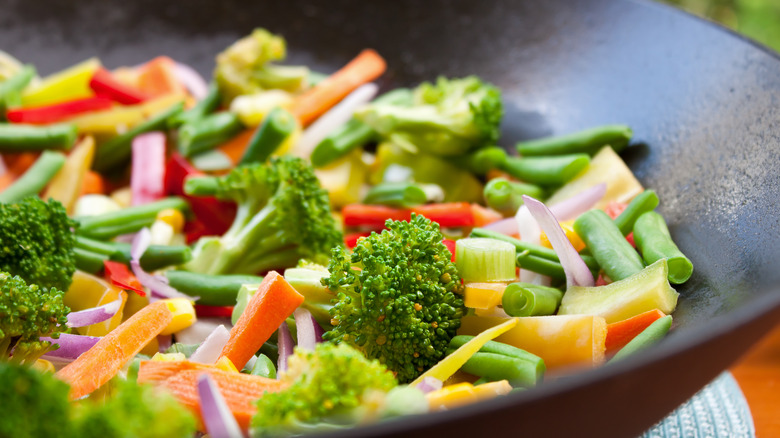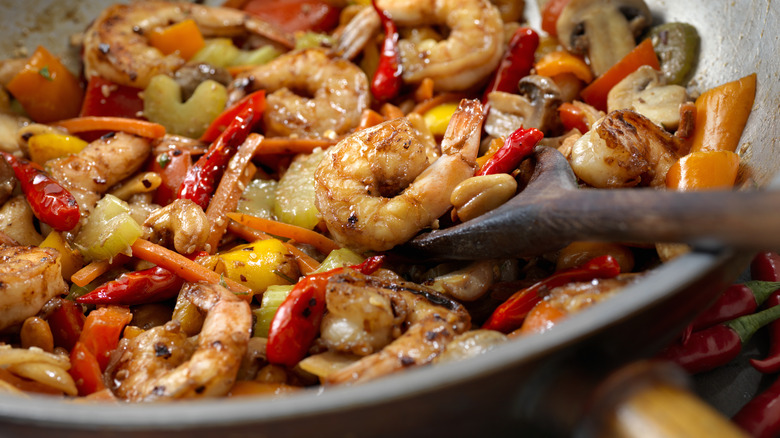Stir-Frying Veggies Is The Best Cooking Method To Maintain Crispness
From keeping them raw in a salad to roasting them in the oven for deeper umami, there are nearly endless ways to prepare vegetables to ensure you get your daily dose of greens. The numerous techniques give veggies varying textures, but if you appreciate crisp foods, then stir-frying is the way to go. As a refresher, stir-frying is a technique to cook foods at a high heat for a short time with a little oil, which is why the vegetables maintain more crispness compared to other cooking methods.
Crispy vegetables like broccoli, bell peppers, carrots, and mushrooms are all delicious, but the crisp texture is not the only perk of stir-frying. Because stir-frying involves less cooking time, more of the vitamins and minerals will be retained by the veggies rather than coming out with the liquids. The exception to this rule is vitamin C, as stir-frying is thought to decrease its levels in veggies like broccoli. It's also healthier than other cooking methods because you can use less oil or butter. And, because there's less cooking time, you'll be able to prepare (and eat) a meal much faster.
The best way to stir-fry vegetables
If you've never stir-fried vegetables before, let's get into a basic outline of the Chinese cooking technique. You'll start by heating a pan over high heat, which is essential because you need a high temperature to cook veggies quickly. If you're using a protein like beef or chicken in the stir-fry, then you can cook that first and use the leftover fats to cook the veggies. Otherwise, use a tablespoon of oil, then add hearty veggies first. When they start to cook down, add the lighter veggies that cook faster, like bok choy. Stir occasionally, then add your stir-fry sauce before removing from the heat. The cook time for stir-fried veggies can be as quick as two or three minutes.
We've got a few recipe suggestions for your stir-fried meal. For a vegan-friendly option, check out our recipe for teriyaki tofu and mushroom stir-fry with ginger, broccoli, and red bell pepper served over a bed of rice. Stir-fry can also have noodles and meat, like in beef and udon noodle stir-fry with bok choy and baby corn. If you prefer poultry, try this recipe for orange chicken stir-fry paired with mixed vegetables and garlic. The best part about stir-fry is that you can really use whatever veggies you want and have at hand, so get creative and don't forget to set a timer so you don't overcook them and lose the crispness.

